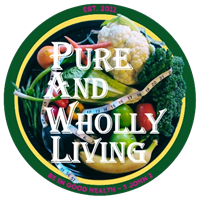Are you at risk of heart disease?
If you live in the U.S., the answer is almost certainly yes: cardiovascular disease (CVD) accounts for one in three deaths.
And when you reach a certain age, pretty much everyone you know will be taking at least one medication to manage a cardiovascular symptom, such as high cholesterol or high blood pressure.
Because they’re so common in our society, we think of heart problems as normal and probably genetic, since we’ve seen the devastating toll on our family members.
But there’s much more to the story.
Some of the most important medical research ever conducted shows conclusively that most of us can prevent cardiovascular disease. And we can even reverse existing damage to our heart and blood vessels. Not through some miracle drug or magic supplement or brand-new, high-tech treatment, but by engaging in four simple, time-tested habits.
Want a healthy and happy heart? Read on…
Only one lifestyle program has been proven to reverse heart disease to the point of being covered by Medicare and insurance companies.
With over 37 years of data and many published studies, it’s the gold standard guide to reducing your own risk of CVD by making simple and powerful lifestyle shifts.
Founded by Dean Ornish, MD, it’s called Ornish Lifestyle Medicine.
The program focuses on four areas:
- What you eat
- How you manage stress
- How much you move, and
- How much love and support you have
Instead of only addressing the effects of CVD, Ornish Lifestyle Medicine focuses on its root causes.
Just as when you’re growing a seedling, a healthy plant requires taking a deeper look at what’s happening underneath the soil — and nurturing it accordingly.
The 4 Pillars of Heart Health and How to Apply Them in Your Life
What do the 4 pillars mean for you?
Here’s how you can put positive changes into practice in your everyday life.
Pillar 1: Nutrition

You are what you eat, right? This pillar focuses on what you’re putting — and not putting — into your body.
Certain classes of foods harm the cardiovascular system, while others promote its health and vitality.
What dietary pattern promotes a healthy heart according to the Ornish Program?
- Eat mostly plants in their natural form. This means more fresh fruits and vegetables, legumes, whole grains, and nuts and seeds. These foods are rich in antioxidants, fiber, vitamins, and minerals that can prevent heart disease.
- Reduce or eliminate animal products, especially red and processed meat products. Replace these with plant proteins, such as tofu, tempeh, beans, lentils, and other legumes.
- Limit refined carbohydrates, including sugar, white flour, and white rice. They lack nutritional value, are known to spike blood sugar, and can lead to chronic inflammation.
- Limit high-fat foods, including oils, and include small amounts of nuts.
- Reduce sodium, instead flavoring meals with herbs and spices that don’t raise blood pressure.
- If you drink caffeine, stick to a maximum of 2 cups per day of green tea or black coffee. These are rich in antioxidants and other compounds that have protective benefits for your heart.
- Depending on your overall dietary pattern, you may want to consider supplementing with B12, Omega-3 fats, vitamin D, and turmeric.
Your heart will thank you for nourishing it well.
Pillar 2: Stress Management

I don’t know anyone who is a stranger to stress (if you are, I want to know your secrets!).
Stress is how your body responds to change or challenge. And it can manifest emotionally, mentally, and physically.
For many of us, this means a faster heart rate, sweating, increased blood sugar, trouble breathing, muscle tension, anxiety, hostility, and slowed digestion. Stress can also impair your immunity.
How does stress impact your heart health? It increases your risk of high blood pressure, cholesterol, and even obesity. These are all known risk factors for cardiovascular disease.
What can you do about stress?
- Hug someone you love. It’s been proven to reduce blood pressure, boost well-being, and improve memory.
- Practice yoga, deep breathing, imagery, or meditation. These habits can increase awareness of what’s going on inside your body. And it can help you better cope with change.
- Laugh more. Spend time with people who make you laugh. Read or watch something funny or get together with others for fun activities that get the giggles going. Laughing reduces stress hormones like cortisol and epinephrine. It can also increase blood flow.
- Start a relaxation journal or log to help you develop a routine. This can be a useful incentive and allows you to watch your progress.
A less-stressed heart is a healthier and stronger heart.
Pillar 3: Fitness

Fitness can take many forms, but the goal is simple: to move your body regularly, which, in turn, improves your overall well-being.
Movement is therapeutic in its ability to strengthen your heart.
This doesn’t mean that you have to sign up for a triathlon this year. (If that’s your thing, I’m not stopping you!)
Regular, moderate exercise has been demonstrated to benefit your heart health in numerous ways:
- Increases your heart’s efficiency to pump blood and access oxygen
- Reduces your oxygen requirements while both resting and active
- Decreases your blood pressure
- Increases your exercise tolerance
- Reduces blood triglyceride levels and raises HDL (“good”) cholesterol
- Reduces your risk for blood clots
- Decreases body fat and increases muscle mass
- Boosts metabolism
How Can You Increase Your Activity?
Some of my favorites include long walks, yoga, biking, swimming, jogging, and pumping iron. And I’ll even check out a group fitness class every now and then.
Simple activities also count. For example, taking the stairs instead of the elevator, walking instead of driving, housework, and yard work. And gardening gives you a bonus because you’ll spend time in nature — plus you’ll end up with nutritious foods to eat!
For best results, aim for at least 30 minutes per day (or 60 minutes every other day for a total of 3-5 hours per week) of aerobic exercise. Some aerobic exercise activities include swimming, biking, and walking.
Strength training exercise is also great to do 2-3 times per week for 20-30 minutes at a time. This includes weights; doing bodyweight exercises, including push-ups, pull-ups, and sit-ups; or practicing resistance training.
Dance is another great form of healthy movement. In a 2016 Australian study of nearly 48,400 adults over the age of 40, researchers found that regular dancing at moderate intensity reduced the risk of death from cardiovascular disease by 46%. An added benefit of dancing is that it often increases your social connections, too.
You can increase intensity and duration of your activity over time, but the most important factor is to make movement a habit. (It may be advisable to speak with your doctor before changing your exercise routine to make sure it’s safe for you.)
A fit heart is better able to do its job.
Pillar 4: Love and Support

Modern science confirms what many of us learned in kindergarten: Having friends is good for you. Not having them, on the other hand, can be hazardous to your health.
Researchers at Brigham Young University concluded that a lack of good friends and connections to others is as damaging to your health as being obese, or as smoking 15 cigarettes per day.
Loneliness kills just as surely as cigarettes. And by the same token, bonding and social connection correspond with higher life expectancy and long-term wellness — and with the prevention of heart disease and even breast cancer.
Societies and cultures that prioritize taking care of each other and building community tend to produce longer-lived people. Health and happiness take a village.
Here are some things you can do to strengthen your support system:
- Join local groups that spend time together socially (if you’re not plugged into your community, you can search for groups by topic at Meetup.com)
- Volunteer for local organizations or events
- Attend sporting events or religious ceremonies
- Schedule recurring social dates with friends or family members
- Write love letters. Even writing about affection for significant others (and not necessarily to them) can lower LDL cholesterol levels.
Love isn’t just good for your emotional heart. It turns out it’s good for your physical heart, too!
Credit: Food Revolution Network
